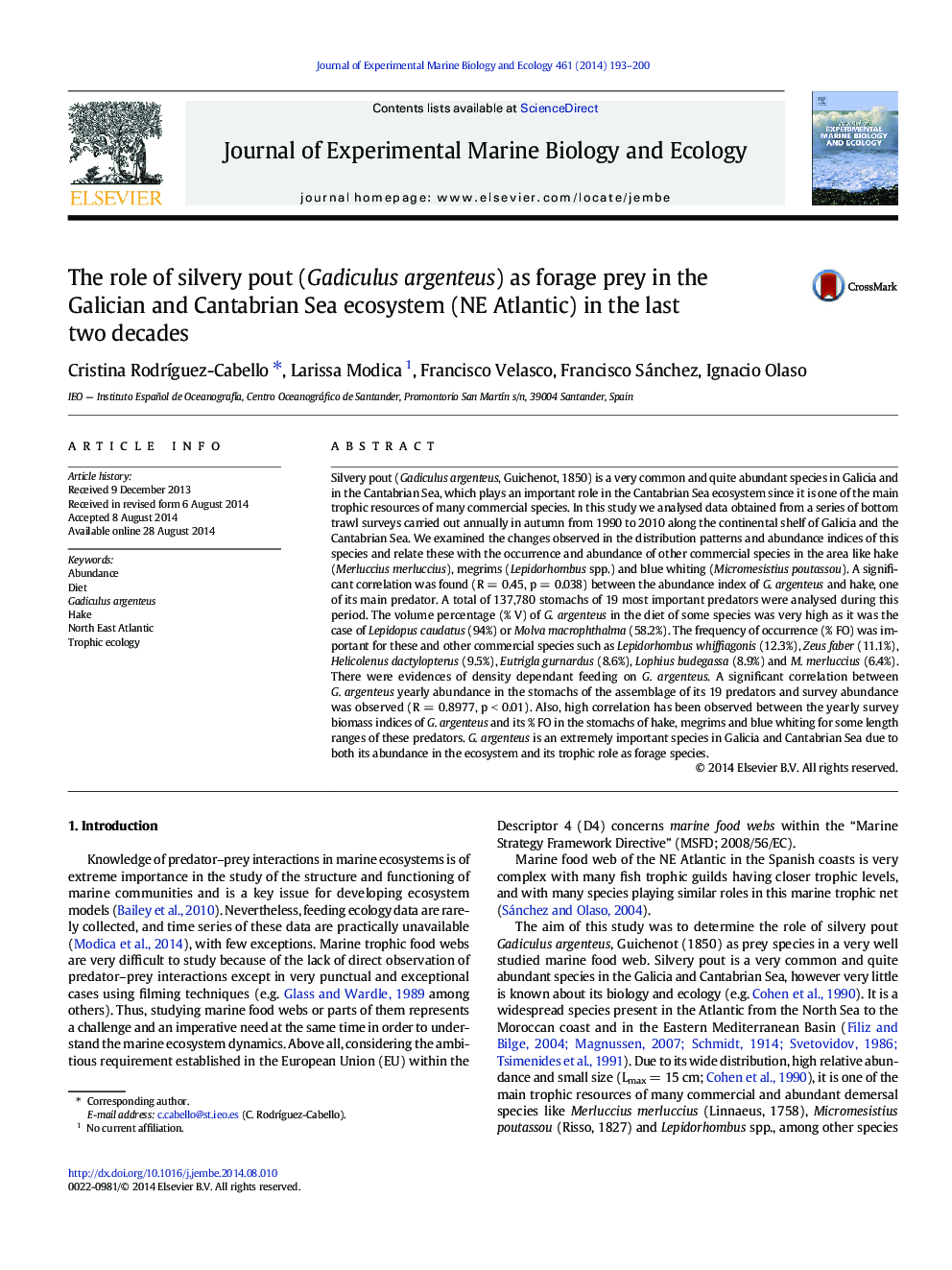| کد مقاله | کد نشریه | سال انتشار | مقاله انگلیسی | نسخه تمام متن |
|---|---|---|---|---|
| 6303934 | 1618414 | 2014 | 8 صفحه PDF | دانلود رایگان |

- We analysed the role of silvery pout as trophic resource in North East Atlantic.
- We studied 137,780 stomachs of its 19 main predator species during 10Â years.
- Silvery pout is a very abundant species in North East Atlantic.
- Evidences of density dependant feeding on silvery pout are provided.
- Silvery pout is a key species in the area due to its trophic role as forage species.
Silvery pout (Gadiculus argenteus, Guichenot, 1850) is a very common and quite abundant species in Galicia and in the Cantabrian Sea, which plays an important role in the Cantabrian Sea ecosystem since it is one of the main trophic resources of many commercial species. In this study we analysed data obtained from a series of bottom trawl surveys carried out annually in autumn from 1990 to 2010 along the continental shelf of Galicia and the Cantabrian Sea. We examined the changes observed in the distribution patterns and abundance indices of this species and relate these with the occurrence and abundance of other commercial species in the area like hake (Merluccius merluccius), megrims (Lepidorhombus spp.) and blue whiting (Micromesistius poutassou). A significant correlation was found (R = 0.45, p = 0.038) between the abundance index of G. argenteus and hake, one of its main predator. A total of 137,780 stomachs of 19 most important predators were analysed during this period. The volume percentage (% V) of G. argenteus in the diet of some species was very high as it was the case of Lepidopus caudatus (94%) or Molva macrophthalma (58.2%). The frequency of occurrence (% FO) was important for these and other commercial species such as Lepidorhombus whiffiagonis (12.3%), Zeus faber (11.1%), Helicolenus dactylopterus (9.5%), Eutrigla gurnardus (8.6%), Lophius budegassa (8.9%) and M. merluccius (6.4%). There were evidences of density dependant feeding on G. argenteus. A significant correlation between G. argenteus yearly abundance in the stomachs of the assemblage of its 19 predators and survey abundance was observed (R = 0.8977, p < 0.01). Also, high correlation has been observed between the yearly survey biomass indices of G. argenteus and its % FO in the stomachs of hake, megrims and blue whiting for some length ranges of these predators. G. argenteus is an extremely important species in Galicia and Cantabrian Sea due to both its abundance in the ecosystem and its trophic role as forage species.
Journal: Journal of Experimental Marine Biology and Ecology - Volume 461, December 2014, Pages 193-200